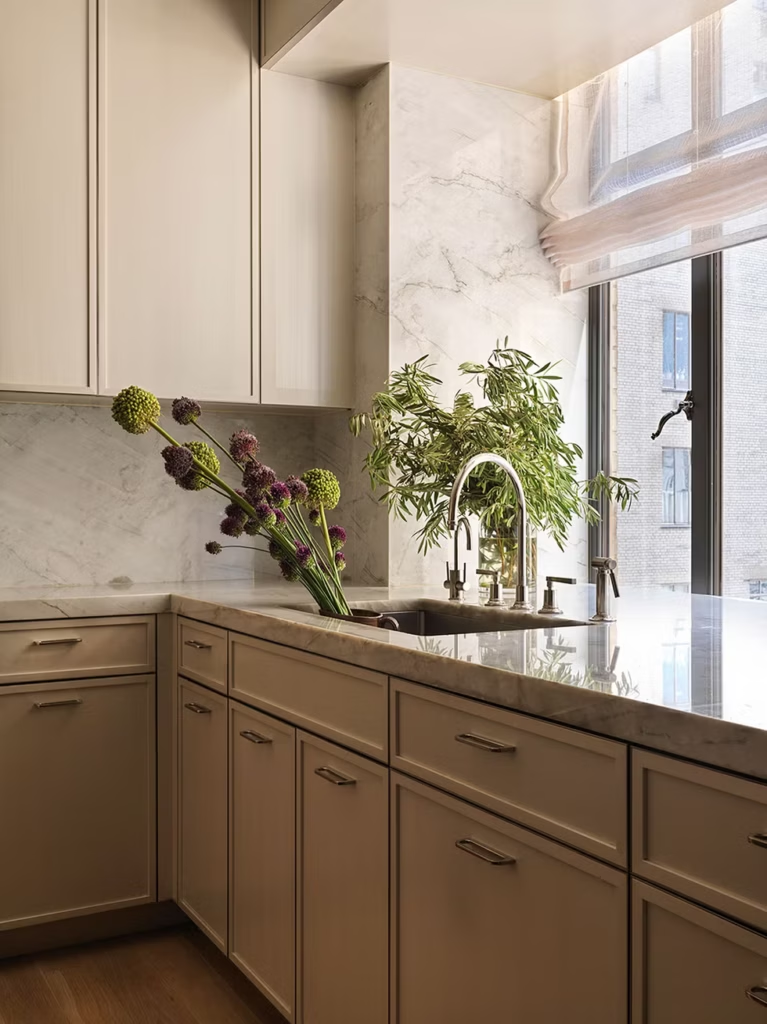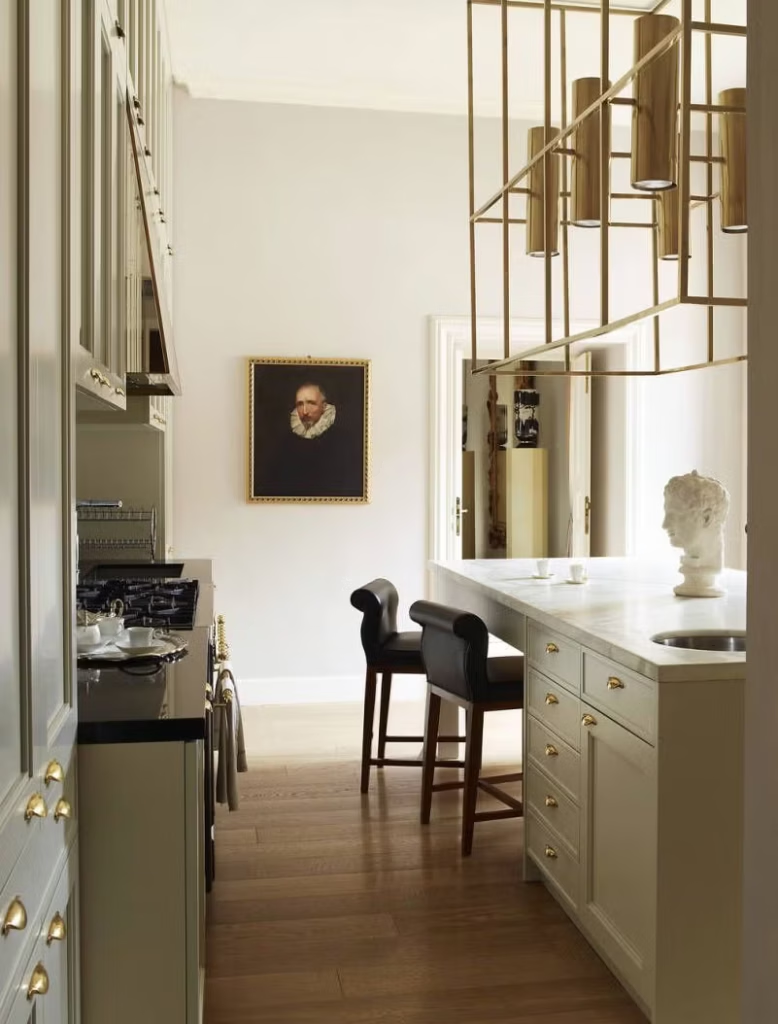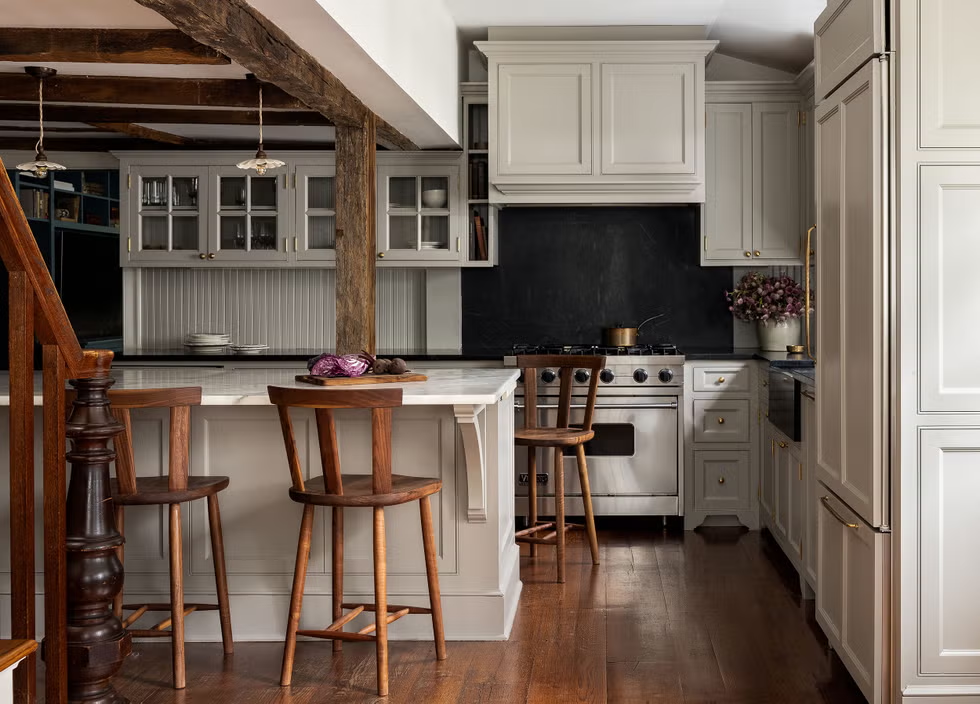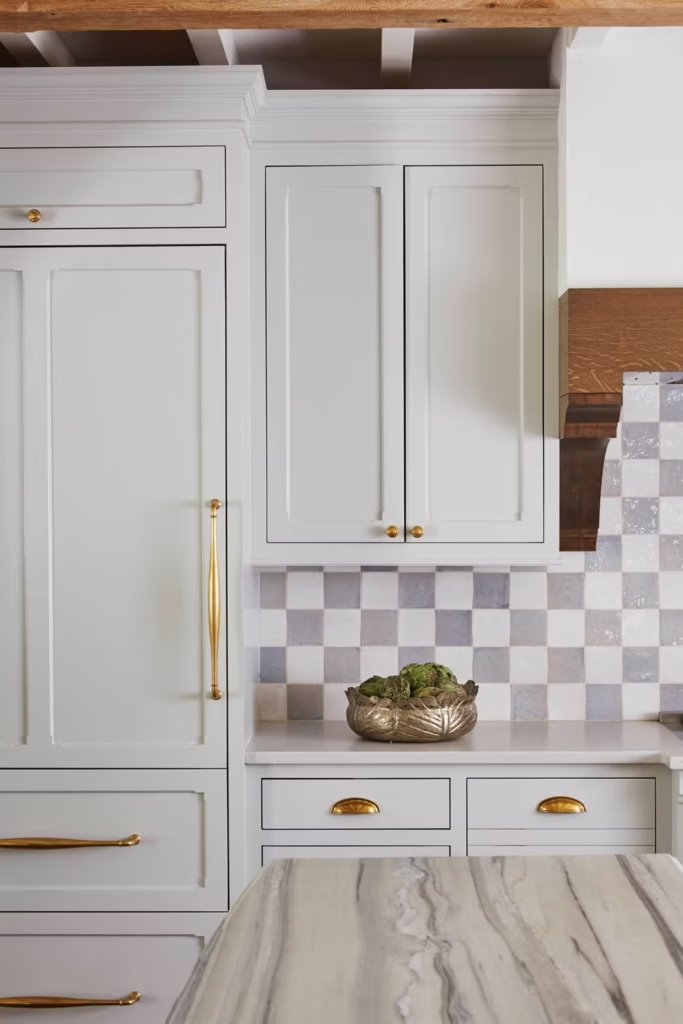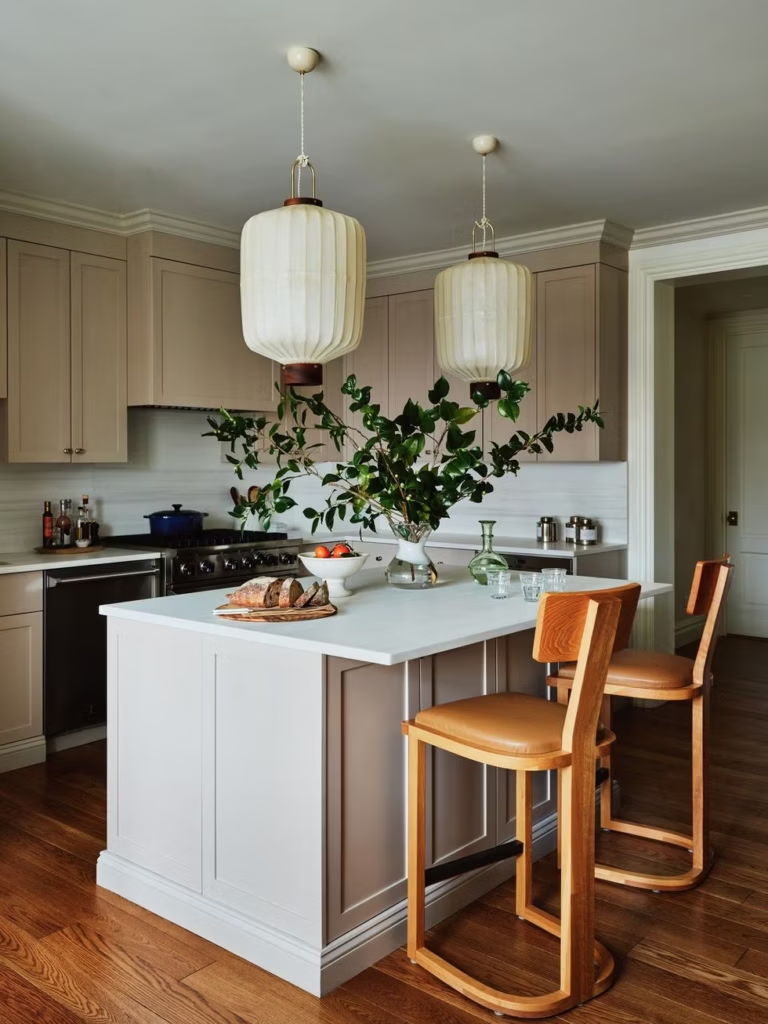Your cart is currently empty!
The Cashmere Kitchen: How to Create a Warm, Timeless Space That Feels Like Home
•
The kitchen is one of the most important rooms in any home. It’s not just where meals are prepared—it’s where conversations happen over coffee, where friends linger after dinner, and where family life naturally unfolds.
But designing a kitchen that’s both functional and inviting can be tricky.
Go too modern, and it might feel cold. Stick with all-white, and it risks looking sterile. Choose bold colors, and you run the risk of growing tired of them in a few years.
Enter the cashmere kitchen—a design approach that strikes the perfect balance between practicality, timelessness, and comfort. Inspired by the cozy sophistication of a cashmere sweater, this style blends soft, warm neutrals with layered textures and subtle luxury.
The result is a kitchen that feels lived-in yet elevated, stylish yet approachable. In this guide, we’ll explore exactly what makes a cashmere kitchen work, with practical tips for bringing this look into your own home.
What Is a Cashmere Kitchen?
A cashmere kitchen isn’t about literal cashmere fabric (though we’ll talk about tactile inspiration later)—it’s about translating the essence of that beloved sweater into your space.
Think: warmth, softness, and understated elegance that stands the test of time. Instead of sharp contrasts or overly trendy choices, cashmere kitchens embrace balanced neutrals, gentle lighting, and inviting textures.
They feel curated but never precious, and they age gracefully thanks to their focus on high-quality materials and finishes.
1. Choose a Warm, Glow-Enhancing Paint Color
The paint color sets the tone for your cashmere kitchen. While pure white can feel crisp, it often lacks warmth. Instead, opt for sand, taupe, or warm beige shades that still pair well with a variety of colors but bring an inviting glow to the space.
Tip: Test your chosen paint in both natural and artificial lighting before committing. The right shade should feel warm in daylight and cozy under evening lights. Colors with soft yellow or red undertones often work best.
2. Opt for Warm-Toned Hardware and Fixtures
The wrong hardware can completely change a kitchen’s vibe. Cold, stainless-steel handles and high-shine chrome fixtures often clash with the soft, welcoming feel of a cashmere kitchen. Instead, look for unlacquered brass, brushed gold, or aged bronze finishes.
These warm metals not only add depth and richness but also patina beautifully over time, developing character with use. For faucets and cabinet pulls, choose designs that feel solid and timeless rather than overly ornate or starkly modern.
3. Incorporate Soft, Tactile Lighting
Lighting in a cashmere kitchen should be more than functional—it should contribute to the atmosphere. Skip harsh overhead glare in favor of layered lighting that blends ambient, task, and accent sources.
One standout choice is fabric-covered pendant or lantern-style fixtures, which diffuse light softly and add a touch of textile-inspired charm. Pair them with dimmer switches so you can adjust brightness for cooking, entertaining, or a quiet evening tea.
4. Play with Texture for Visual and Tactile Interest
Because the color palette in a cashmere kitchen is typically neutral, texture becomes a key design tool. Combining different surfaces—smooth stone, matte cabinetry, natural wood, and brushed metal—prevents the space from feeling flat.
Consider mixing marble or quartz countertops with handmade tile backsplashes or incorporating woven barstool seats alongside sleek cabinet fronts. Even small touches, like linen curtains or ceramic serving ware, can enhance the layered feel.
5. Blend Modern Comfort with Character Pieces
One of the strengths of the cashmere kitchen is its ability to act as a backdrop for personal touches. While the core design remains neutral and timeless, you can layer in character pieces like artwork, statement lighting, or vintage furniture.
For example, a pair of antique bar stools or a rustic farmhouse table can ground an otherwise modern layout, while a framed portrait or oversized pendant light can serve as a focal point. These items can be updated over time without altering the core design.
6. Embrace Natural and Organic Elements
A cashmere kitchen feels inviting because it connects to nature. This can be as simple as exposed wooden beams, solid oak floors, or stone counters with natural veining.
Houseplants, fresh flowers, and even a bowl of seasonal fruit add color and life to the space. When choosing wood tones, lean toward warm finishes like walnut, oak, or ash. Avoid overly gray-washed woods that can cool down the overall effect.
7. Create an Everyday-Livable Layout
The beauty of the cashmere kitchen is that it’s as practical as it is beautiful. Ensure your layout supports real daily use by incorporating:
- Generous storage solutions (think deep drawers, pull-out pantry shelves, and appliance garages).
- Durable surfaces that can handle spills, hot pans, and frequent cleaning.
- Zones for prep, cooking, and socializing so the kitchen feels organized even during busy times. This functionality is what makes the space not just beautiful for photos, but genuinely enjoyable to cook and gather in.
8. Use Lighting to Accentuate Warmth
Beyond your main fixtures, consider accent lighting to enhance the room’s glow. Under-cabinet lights, LED strips along open shelves, or wall-mounted sconces can highlight texture and create depth.
For maximum warmth, choose bulbs with a 2700K to 3000K color temperature—this gives a soft, golden tone that flatters both the room and the people in it.
9. Keep the Palette Balanced, Not Bland
A cashmere kitchen’s neutral palette should never feel boring. The trick is to layer multiple shades of warm neutrals—like cream, beige, greige, and caramel—rather than sticking to a single tone.
Add contrast with darker wood or soft black accents for definition. If you want a subtle pop of color, muted sage greens, dusty blues, or terracotta accents can work beautifully without breaking the calm mood.
10. Let the Space Evolve Over Time
Just like a favorite sweater gains character with wear, a cashmere kitchen should feel even more inviting as years pass. Don’t be afraid to let natural materials age gracefully—unlacquered brass will deepen in tone, and wood will develop a rich patina.
Because the base design is timeless, you can update smaller elements (barstool upholstery, pendant shades, countertop décor) as trends change without losing the kitchen’s essence.
Conclusion: The Lasting Appeal of a Cashmere Kitchen
A cashmere kitchen isn’t about chasing the latest design fad—it’s about creating a space you’ll love for years to come. With its soft neutrals, warm materials, and tactile richness, it strikes the ideal balance between beauty and livability.
It’s functional enough for everyday cooking, stylish enough for entertaining, and cozy enough to feel like the heart of your home.
By focusing on timeless colors, quality finishes, and thoughtful layering, you can craft a kitchen that feels as inviting as your favorite sweater—one that welcomes you in, day after day, and only grows better with time.
Want to Work With Us? Email us at [email protected]. Let’s create something beautiful together!
-
Elevate Your Space with Curated Light: Three Signature Fixtures from The Barefoot Edit
-
What If Pleasure Wasn’t the Goal—But the Result of Being Deeply Known?
-
Transforming Spaces: A Dream House on the Heights of Halland
-
Embracing Exposed Concrete Walls for a Raw, Industrial Character
-
Breaking Down the Wedding Budget: Where to Start and How Much to Spend
